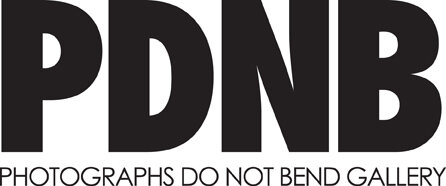A photography collection should always include some of the Masters of the medium, whether the collection is mostly contemporary or a specific genre or subject matter. Masters like Paul Strand, Edward Weston, Imogen Cunningham and André Kertész come to mind.
The beauty of photography is that usually, there are multiple prints made of a coveted image. (Imagine more than one Mona Lisa?) For instance, Kertész printed carte postales of his work very early in his career in Paris, France. There were not many of these prints made of Chez Mondrian, Paris, 1926, so they are rare and highly coveted in the art market.
Later, in the 1970’s, Kertész began printing modern prints of Chez Mondrian and other early images. Kertész was experiencing renewed interest in his work so these treasured images like Melancholic Tulip, 1939, Satiric Dancer, Paris, 1926 and Fork, Paris, 1929 became more available to new collectors in 11 x 14-inch gelatin silver prints.
In 1972, he was still creating important work, including this extraordinary graphic composition of light, shadow and texture, Martinique. There were many 11 x 14-inch prints made of this image, but Kertész experimented with the 16 x 20 format for this particular photograph. There were few printed before he passed in 1985.
This photograph that we have available is a rare 16 x 20-inch print.
“I still regard myself as an amateur today, and I hope that’s what I’ll stay until the end of my life. Because I’m forever a beginner who discovers the world again and again.” - André Kertész
André Kertész, Martinique, 1972
Gelatin Silver Print
16 x 20 in.
Signed by artist, titled and dated in pencil on print verso:
“Martinique, Jan 1, 1972, A. Kertesz”
$12,500
André Kertész (1894-1985)
André Kertész was born in Budapest, Hungary where he started his photography. Kertész is recognized as one of the world’s leading photographers, his career spanned more than 70 years. He settled in Paris where he began a career in photography doing free-lance reportage and a personal document of his daily life. He was one of the first artists to photograph Paris at night and was also a pioneer in using the small-format camera and was a mentor to photographers such as Henri Cartier-Bresson, Robert Capa, and Brassaï. Kertész was often called a surrealist, but he often denied that he was. He came to America when employed by Keystone Studios in New York, and due to the war, was unable to return to Europe. He continued his work, documenting daily life, but never seemed happy to be away from Europe, his work was not valued as much in America. In the seventies this artist was finally valued as a major photographer of the 20th century. During his career he received numerous honors: a Silver Medal at the Exposition Coloniale, Paris in 1930, a Gold Medal at the Venice Biennale in 1962, a Guggenheim Fellowship in 1975. Towards the end of his life he returned to Hungary to visit his native city, Budapest.He has been the subject of many one-person exhibitions: the Art Institute of Chicago in 1946, the Biblióthèque Nationale, Paris in 1963, the Museum of Modern Art, New York, 1964, and more exhibitions have been organized since his death. His early carte-postals from Paris are extremely desirable to collectors.
Portrait from International Photography Hall of Fame and Museum; iphf.org







